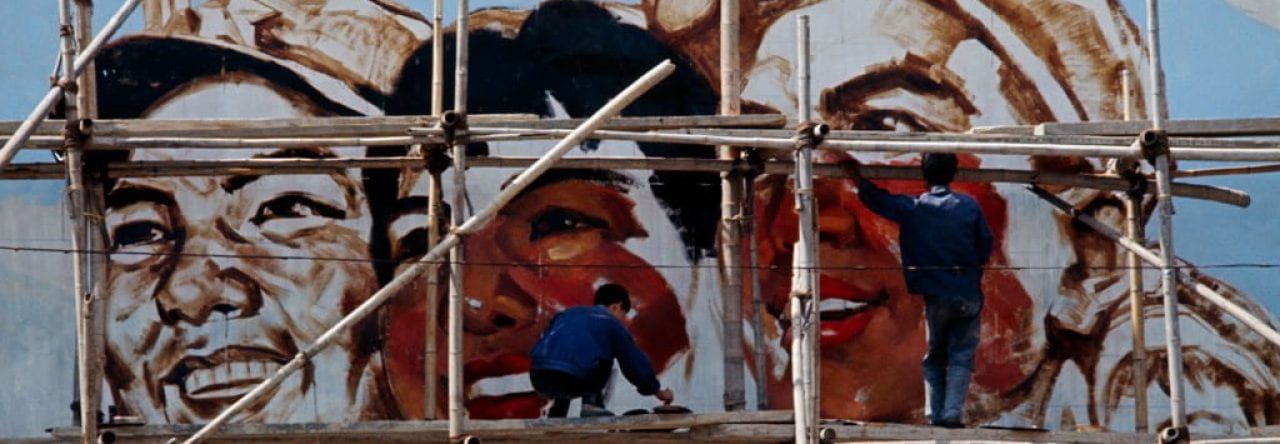
Xu Beihong, The foolish old man who moved the mountain, ink and color on paper, horizontal scroll, 1940.
Oil painting, known as a prominent art form in the West and the world, has showcased extraordinary artistic charm since its inception. In China, oil painting was once referred to as “Western painting,” and its appearance had significant implications for the Chinese people. However, before the end of the 19th century, Chinese understanding of oil painting was limited and one-sided. The influence of Western painting on traditional Chinese art was minimal. It was not until the end of the 19th century and the beginning of the 20th century that oil painting was widely popularized and recognized in China.
As a new form of artistic expression, oil painting differs from any category of Chinese painting in terms of material techniques, observation, and aesthetic experience. It is subversive to the Chinese peoples, and therefore, the development of contemporary Chinese oil painting and its “nationalization” phenomenon holds significant importance for the 20th-century development of Chinese oil painting.
Oil painting developed in the west, but this does not mean that the oil painting art expression language should have the fixed western pattern. After the introduction of oil painting into China, the Chinese artists began the process of assimilation and localization of oil painting. In the early 20th century, Xu Beihong, Lin Fengmian, and other Chinese artists went to Europe to study painting during a time when western modernism was flourishing in literature and art. Within the field of painting, various modernist schools, such as realism, impressionism, and post-impressionism, were coexisting and could be studied according to personal interest and needs. This allowed for a combination of different painting styles and schools, leading to the development and success of Chinese oil painting during this period.
Xu Beihong was one of the artists who led the movement of nationalizing oil painting in China. After his appointment as the dean of the China Central Academy of Fine Arts and the president of the China Artists Association in the 1950s, Xu Beihong attached great importance to injecting elements of Chinese national culture into his works. My exhibition will focus on Xu Beihong’s contribution in the movement of nationalizing oil painting in China, including his works that range from before the Anti-Japanese War and after the founding of the new China. Under different historical contexts, I plan to demonstrate how Xu Beihong’s oil paintings reflect his ideology that promoted the nationalization of Chinese oil painting.
Bibliography
Sufang, He 何淑芳. 2016. 对油画民族化的深入思考 (A Profound Reflection on the Nationalization of Oil Painting). 中国期刊. https://www.zzqklm.com/w/yl/17086.html.


Matthew Kapica
Xu Beihong’s art seems to have a lot of desire and it shows in his exceptional oil paintings. I love how you added some background info about the origin of oil panting and what type of influence Xu Beihong had on that style of art. The only thing I could criticize you for would be not giving me more paintings to look at. Great blog post!